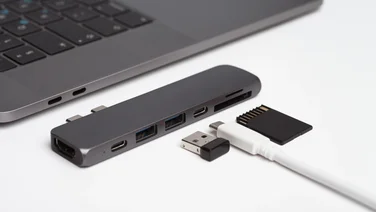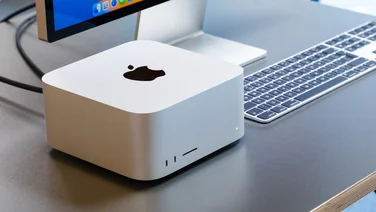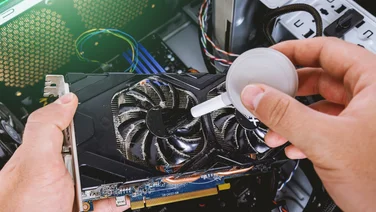To help us provide you with free impartial advice, we may earn a commission if you buy through links on our site. Learn more
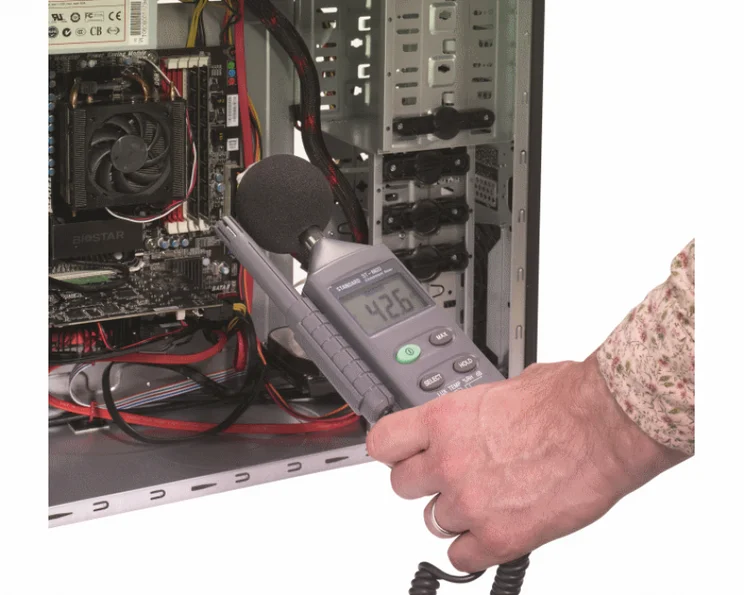
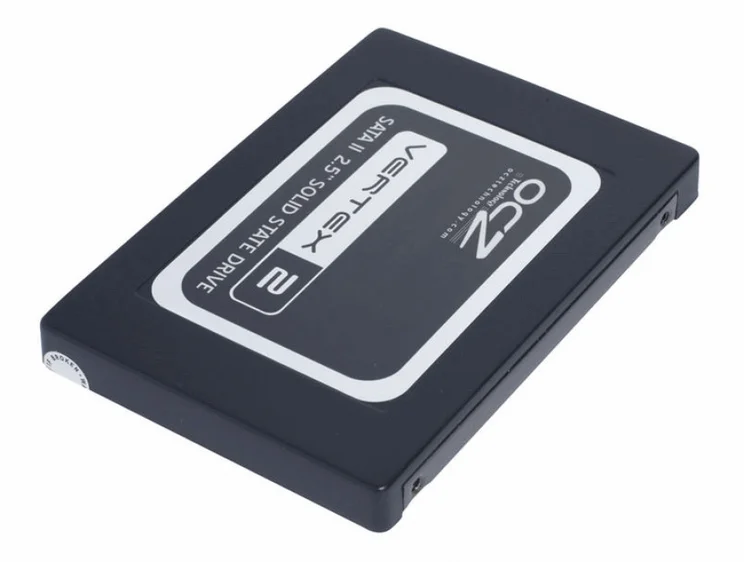
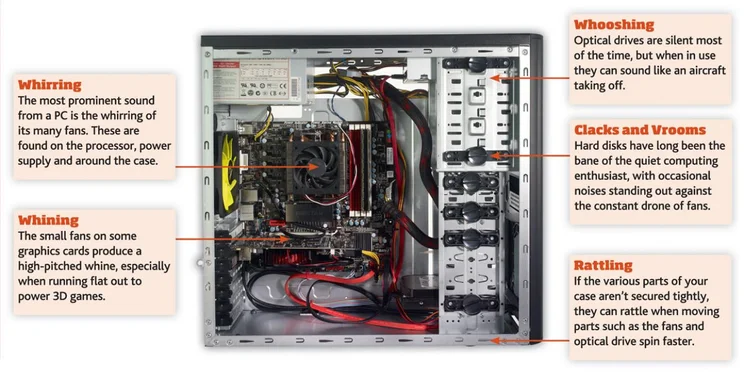
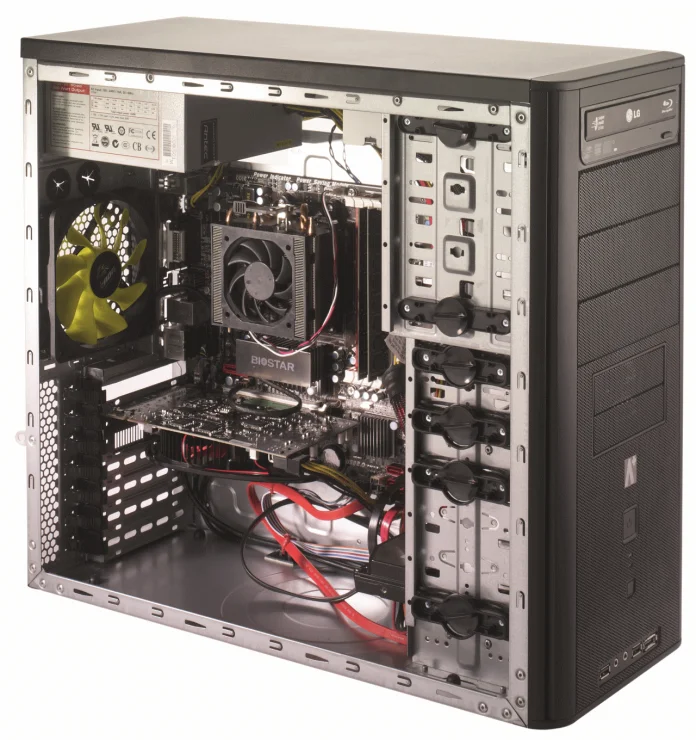
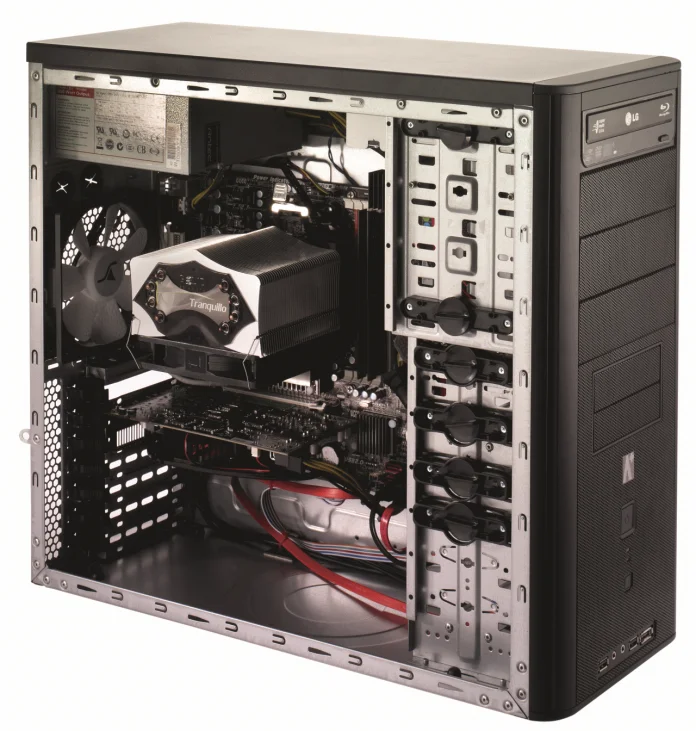
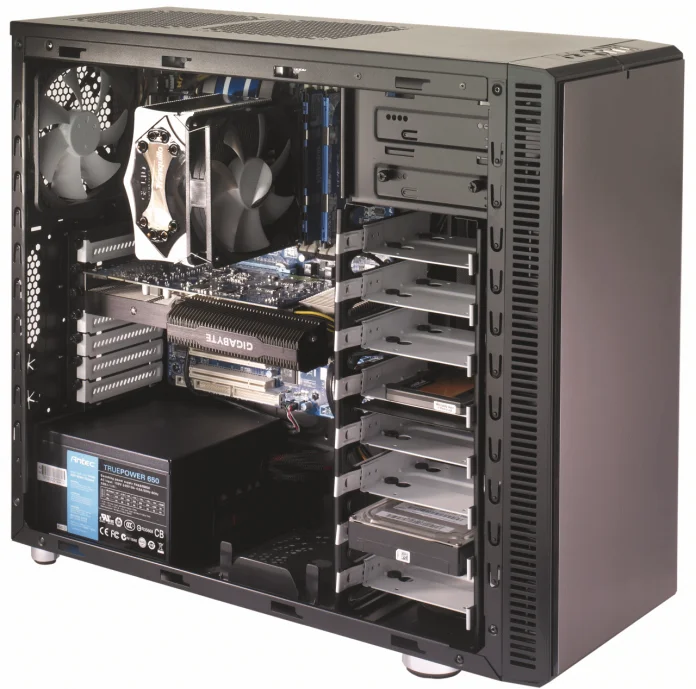
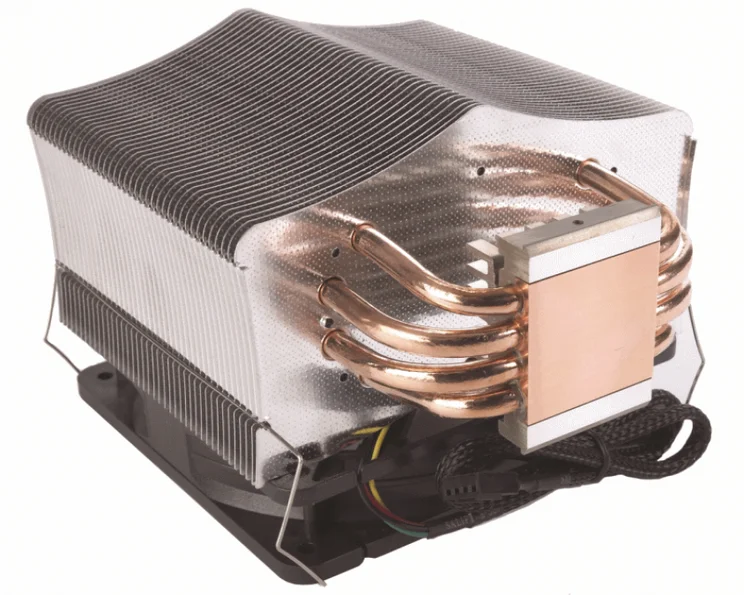
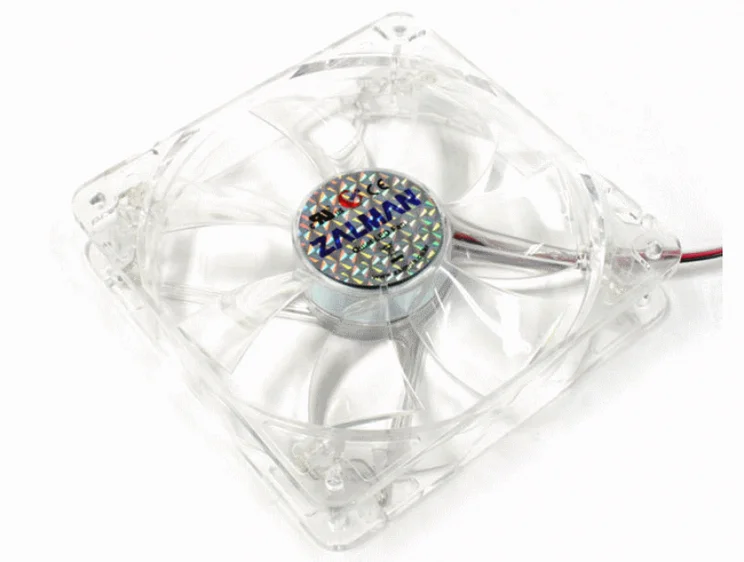
PCs can make all kinds of noise, from the whir and whoosh of the fans to the rattles and clicks from the case and hard disk. Thankfully there’s plenty that you can do to prevent your PC from being so unpleasantly loud that it makes it impossible to relax. These tweaks range from free tips like double-checking the fittings and adjusting settings to extravagant methods of reducing noise to an absolute minimum.
The main focus of this feature is to help you identify the noisiest components in your PC and suggest a range of ways that will make them quieter. First off, though, we need a bit of background reading on how sounds are measured, and the counter-intuitive way in which multiple noise sources interact.
THE SCIENCE OF SOUND
When people talk of noise levels it’s usually in terms of decibels (dB), but these measurements are riddled with potential for confusion. For starters, a decibel is a relative measurement, so to say that a sound is 30dB is meaningless unless we define what it’s compared to. Common practice is set 0dB as the threshold of human hearing – the quietest sound we can detect.
Then there’s the issue of weighting: our ears are more sensitive to certain frequencies than others. Measurements are usually made in dBA, which uses a weighting curve to take into account the perceived loudness of different frequencies. The distance at which sounds are measured also has a huge bearing on results. 1m from the sound source is a common standard, but unless it’s expressly stipulated, there’s no reason to assume it’s the case for a given measurement. Because of all these variables, it’s best to take quoted dB ratings with a pinch of salt. All the measurements we quote in this article are in dBA measured at 1m.
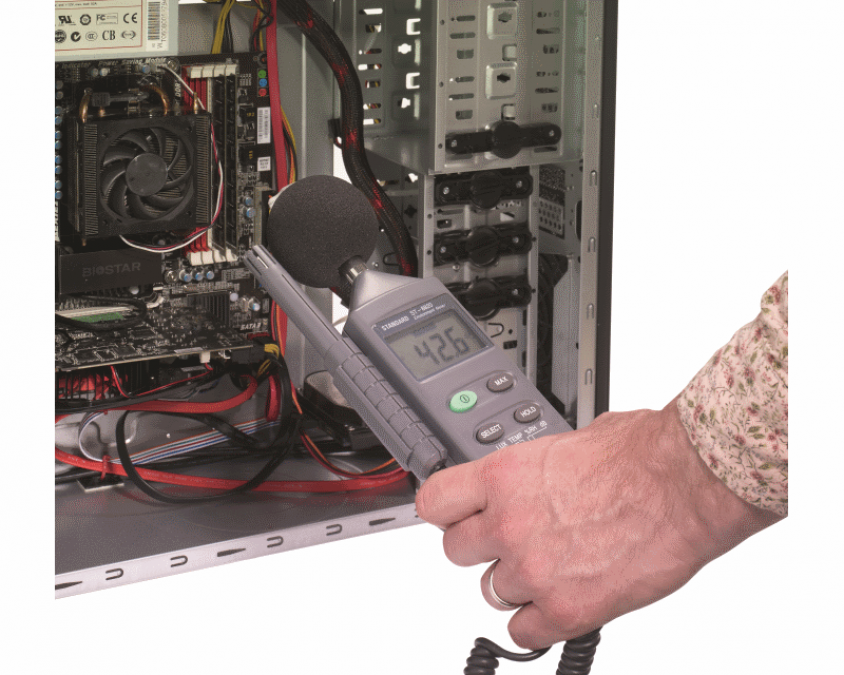
Another confusing aspect to the decibel scale is that it’s logarithmic, not linear. Add two noise sources of 30dBA together and you don’t get a 60dBA noise. Instead, the result is 33dBA noise. A jump of 3dBA doubles the energy, but the way we perceive sound means it doesn’t seem twice as loud. Opinions vary, but it’s widely regarded that an increase of 10dBA is perceived as being twice as loud, even though this equates to about 10 times the energy.
The flip side of this anomoly is that, if we take four noisy fans and switch three off, the perceived loudness doesn’t drop to a quarter. The result is more like three quarters the perceived volume.
That’s why it’s essential to take a holistic approach when making a quiet PC. There’s little point in replacing some noisy fans with quiet ones but leaving others whining away. Meanwhile, after replacing the noisiest component, you may find that various others that were previously masked now sound surprisingly loud. It’s also worth bearing in mind that us humans are quite good at ignoring continuous sounds, but changing ones such as clicking hard disks or fans that change speed are harder to ignore.
That’s enough time spent in the classroom. It’s time to open up the PC and get to work.
ON THE CASE
The first task when making an existing PC quieter is to establish how much noise each component is making. The annotated photo below shows all the most likely suspects.
A rattling sound is primarily caused by loose side panels. As the vibrations of spinning DVDs, fans and hard disks resonate through the main skeleton of the case, they vibrate against any loose parts of the outer layer of the case. Another cause of rattling can be the various parts of the case’s internals – the way the drive cages are held in place, for example. It’s easy to check which part of a case is at fault . Just touch the various parts with a firm hand – once your hand stops the noise, you’ve found the culprit.
A less common cause of rattling is the ball-bearing motors of fans wearing out. This might sound more like a grinding sound, at least at the start of the problem. Whether your fan is on the way out or just makes a loud whoosh sound, finding which fan is at fault is a tricky process. After all, there are quite a few to contend with. The processor and graphics card will usually have one each, but there’s another hidden in the power supply, various ones dotted around the case and possibly one on the motherboard.
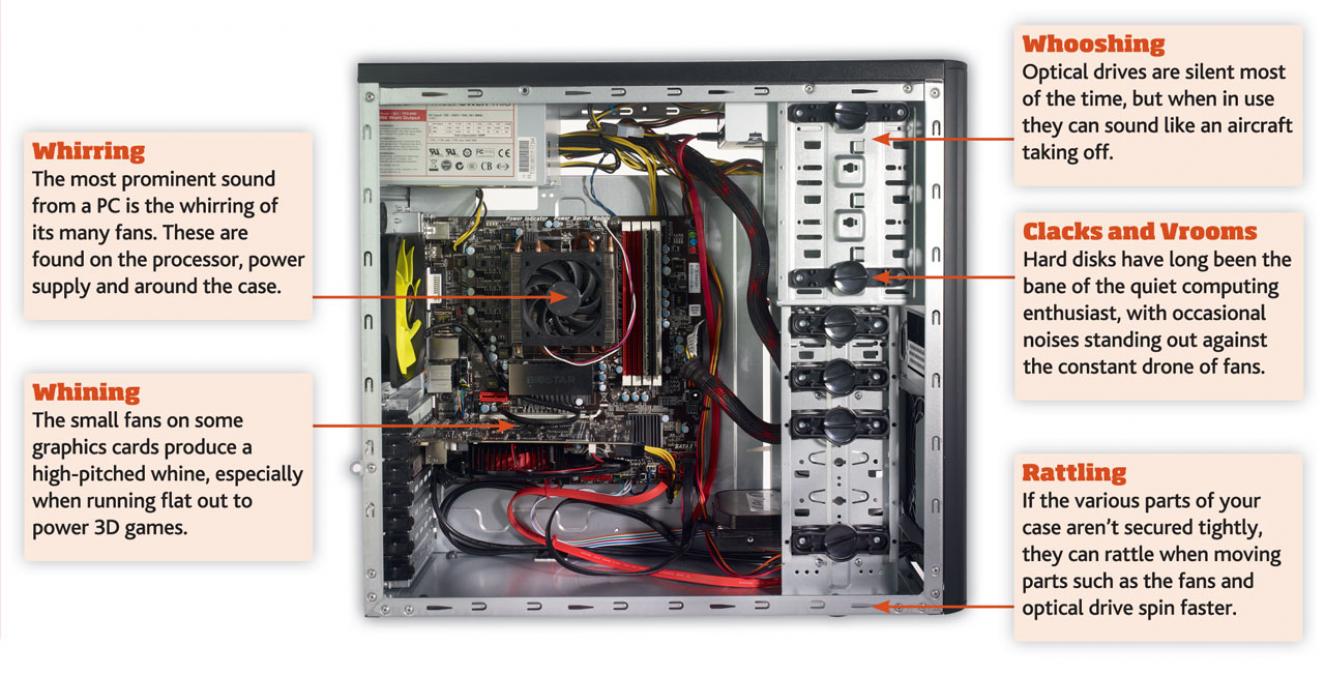
The first check is whether the loud fan noise only appears at certain times. If it gets louder when your processor is working hard, such as when you’re encoding video, then it’s the fan of your CPU cooler that’s at fault. If it’s gaming that makes your PC loud, then place the blame with your graphics card.
If your PC is always loud then you’ll need to check each fan one by one. This entails stopping each fan by placing a finger firmly on the central round bit. If there’s a mesh or grille in the way, jam a pencil into the fan blades. Don’t jab your finger into the fan blades, as some are so sharp and spin so fast that they’ll cut you quite nastily. You should only do this for a second or so for each fan to avoid components overheating. This should still be enough to build up a picture of which fans are creating the most noise.
When it comes to whirs, bear in mind that small fans tend to be higher pitched, whereas larger fans can spin slower and still push plenty of air, so they tend to be lower pitched and quieter. Remember that there’s a fan in the power supply (the box that the spaghetti of wires comes from) and that there might be one hidden between the hard disk rack and the inside of the front of the case.
Other noise sources are easier to identify. Optical drives lie dormant most of the time, but when accessing discs they resemble a hovercraft. It’s perhaps forgivable when you want to read or burn a disc as quickly as possible, but Windows often decides to spin an inserted disc at other, less useful times too.
Hard disks emit a low-pitched hum that’s usually much quieter than the various fans in a PC, but they can cut through after other sounds have been curbed. Clacking sounds from the disk’s arm mechanisms can be more problematic, not least because the random patterns of noise are more distracting than constant noises from other components. At least this distinctive sound is easy to identify.
HEATED DISCUSSION
Of all the noises emanating from a PC, it’s usually the fans that are the main issue. However, you can’t just rip them out – without them, all those expensive components would overheat in a matter of seconds.
Fans are only part of the cooling process, though. Air is a relatively poor conductor of heat, and it would be impossible to blow air across a bare processor fast enough to keep it cool. This is where heat sinks come in. Metal heat sinks disperse the heat from the processor over a much larger surface area, which means less airflow is needed to draw the heat away from the heat sink and out of the case. As a general rule, the bigger the heat sink, the more surface area it has and the more efficient it is. We’ve already seen how larger fans can spin more slowly and still shift plenty of air, so the rule for both fans and heat sinks is bigger is better.
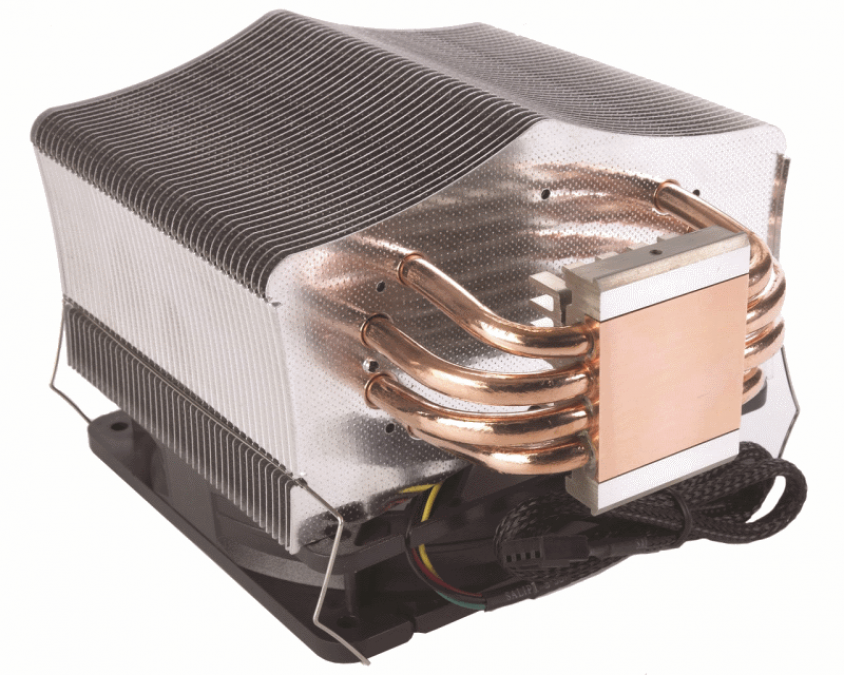
The two main heat sinks in a PC are the ones cooling your processor and graphics card. There are lots of processor coolers designed for quiet operation, and although they’re not exactly easy to fit, anyone with experience grappling inside PCs should cope fine. A great example of a quiet yet effective CPU cooler is the Gelid Tranquillo. It’s big but not overly massive, its fan runs quiet and it’s affordable at £29 from www.quietpc.com – who also stocks most of the other components mentioned in this article.
Replacing a loud cooler on a graphics card is much trickier. If done wrong, it’s worryingly easy to break the card. We therefore recommend replacing the entire graphics card is the existing one’s fan is too noisy. You can either check our reviews and pick one we’ve said is quiet, or opt for a card that has no cooling fans at all. These cards are referred to as being passively cooled. Most get away without any fans because they’re not very powerful – their slow graphics processors don’t generate much heat. This makes them pretty much useless for games or video editing, although they’re fine for other PC tasks. The AMD Radeon HD 6450 is a solid low-cost option at around £35. More powerful ones use large, elaborate heat sinks and rely on case fans to blow air across them. The fastest passively cooled graphics card currently available is the Gigabyte Radeon HD 6770 Silent Cell, which costs £118.
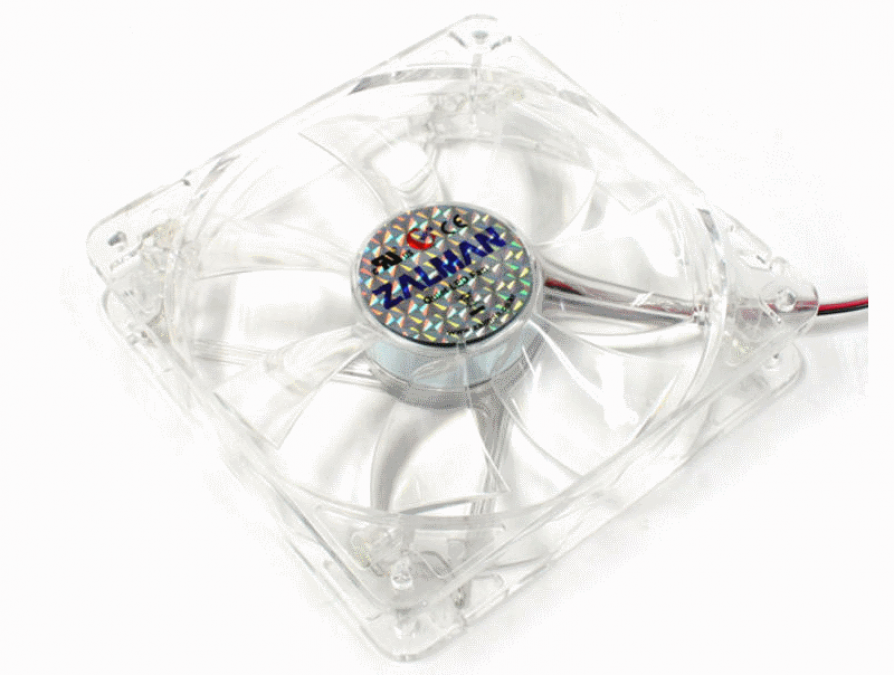
Replacing case fans is reasonably easy and cheap – expect to pay between £3 and £10 per fan, but don’t forget that there may be quite a few to replace. The ones on the back and side panels are easily accessible but ones on the top or front behind the disk drives may be less so. We recommend the Zalman ZM-F3 LED, which costs around £8.
TUNE UP
Whether you’ve chosen to replace those noisy fans or not, you should tune your PC to give the best balance of low temperatures and low noise. It’s free to do so, if nothing else.
Visit your PC’s BIOS by hitting Delete as your PC powers up. You’ll be presented with a fairly horrible screen of text options. Navigate to an option called something like Hardware, Health, or Monitoring and hit Enter – you should see a few options for managing your fans. Typically they’re called something Smart Fan or Q-Fan. You can set fan speeds by percentages or target temperatures. As silicon chips can safely run at up to 70°C, you can be aggressive when throttling fan speeds. It’s also worth activating Cool’n’Quiet for AMD processors or EIST or SpeedStep for Intel. These technologies lower the processors’ clock speeds when running non-demanding software, so they’ll generate less heat.
After changing your PC’s settings, you should always test it to ensure that you haven’t introduced instability (due to overheating, for example). There are a few free applications that can help.
The smallfft test of Prime95 is a useful stress test for processors – visit www.mersenne.org and click Follow these instructions to install the software. As this test runs, monitor the temperature of an Intel processor with Core Temp. For AMD processors, use the OverDrive tool.
If you’ve got a gaming graphics card you should test this too. Use GPU-Z to monitor the temperature while running a taxing benchmark such as 3DMark from www.futuremark.com. Always run stress tests for at least an hour – if you encounter problems, ensure the new hardware was installed correctly, and failing that, alter the fan speeds back up slightly.
WHEN THE FANS FADE AWAY
Once the whirring of all those fans has been dealt with, you might start to notice various other annoying noises that were previously masked.
The clacking of hard disks is a tricky problem to resolve – you have very little control over how a hard disk operates. However, the low-frequency hum of a hard disk is linked to its spin speed, and slower disks tend to produce less noise. 7,200rpm is the standard spin speed for a modern hard disk. 5,400rpm disks are available but they’re generally limited to smaller capacities. The exception is Eco or Green disks, which are designed for low power consumption, and that generally means slower spin speeds and less noise. They perform slower than 7,200rpm disks, though, so can make your PC feel sluggish, and the noise differences aren’t huge.
A better option may be to stick with your existing hard disk but muffle its noise. The Nexus DTW 2300B DiskTwin is a cheap way to do this. It comprises two bars of metal heatsink with rubber fittings to absorb noise before it resonates around the case. These bars screw into the sides of the disk, and the whole assembly fits in 5.25in drive bay. We didn’t find it to be particularly effective in our tests, though.
A pricier but more effective option is the Grow Up Japan Smart Drive Neo, which costs £80. It’s essentially a large metal box that you install in a 5.25in drive bay, with padding inside to protect your hard disk and absorb its noise; the lid is lined with a thick layer of rubber, and there are heatpads to attach to your hard disk to ensure that it doesn’t overheat inside this sound-tight box. It works very well, making even the clackiest of hard disks very quiet.
For absolute silence and an incredibly responsive PC, consider a solid-state drive (SSD). These are essentially super-fast flash drives, and the best ones are significantly faster than the fastest hard disk. Prices have dropped significantly of late, though they still aren’t cheap at about £1.50 per GB (compared to 5p per GB for traditional hard disks). However, with no moving parts they’re totally silent.
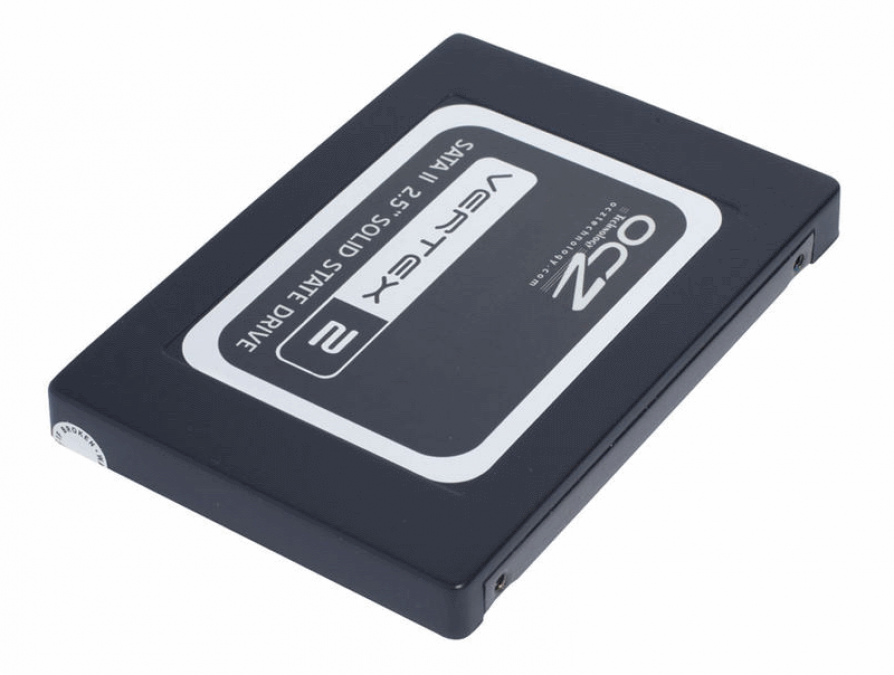
There’s also such a thing as a quiet optical drive – the LG CH08LS10 – which emits only a faint whir instead of the grating whoosh of an ordinary optical drive. It’s not cheap at around £70, but it is a Blu-ray reader as well as DVD writer. If you don’t want to spend any money, software such as Nero Drive Speed can throttle the speed of your drive, but bear in mind that it’ll affect performance as well as noise levels.
Reducing rattles and vibrations resonating around the case is often just a matter of tightening screws, but there are further steps you can take if the screwdriver fails to eliminate the problem. Try padding fixings with something like pieces of rubber band – place the rubber between the two pieces of rattling metal and screw them back together. If the gap between the metal is two small, try some cloth.
Alternatively, the Fractal Design Anti-Vibration Kit costs £13 and includes various rubber fixings to dampen vibrations from hard disks and case fans, as well as replacement rubber feet for the case itself.
CASE STUDIES
Over the next three pages we look at free, affordable and custom-build options for a quieter PC.
Case Study 1: The Free Option
Idle Noise: 40.8dBA
Maximum Processor Temperature: 61°C
Maximum Graphics Card Temperature: 76°C
Cost: £0
Quite often the noise that a PC makes can be traced to some trivial sources: a side panel that’s not been secured properly and rattles loosely or some fans that have been set to blow at full speed even though they don’t need to. You can often make a huge difference to the noise of a PC without having to spend any money.
Our test PC was producing a horrible rattling sound, as if the stress of running Mafia 2 is literally shaking the system apart. It also had a constant whoosh-whiney sound. We therefore had a problem with parts of the case being lose, and at least one fan being unbearably loud.

We slid the side panels off so that we could tighten the screws holding the hard disk and optical drive in place. We also checked whether the drive cages were loose. Once happy, we firmly screwed our side panels onto the case. We fired up the PC, and then Mafia 2, and definitely heard less rattle, although some remained.
Next up was some fan management. We headed into the BIOS and set all the fans to run as slowly as we could, or not to kick in until the processor recorded a temperature of over 60°C. The PC was a touch quieter, but not by much – it seems that no matter how slow we set of our fans to spin, it was just too loud for our tastes.
However, before ordering a new fan, we wanted to check that the new fan speeds wouldn’t make our PC unstable. We loaded AMD’s OverDrive tool to monitor the processor temperature, used GPU-Z with background logging enabled to monitor the graphics card’s temperatures and ran Prime95 and the Unigine Tropics benchmark simultaneously for a couple of hours. While the whine of the graphics card was still as loud as ever, we were pleased to suffer no crashes or overheats – the processor was running at 61°C and the graphics card at 76°C.
Case Study 2: Affordable Upgrades
Idle Noise: 35.9dBA
Maximum Processor Temperature: 51°C
Maximum Graphics Card Temperature: 76°C
Cost: £53
After playing with the fan speeds (see Case study 1) our PC was quieter, but still not quiet enough. The main culprit was the rear case fan, which was way too loud even at low speeds. As the temperature of the processor was still fine after we’d adjusted the fan’s speed, we could replace it without fear. We used the rubber mounts of Fractal Design’s Anti-Vibration Kit to mount a 120mm Sharkoon Silent Eagle 1000 fan, which is both very quiet and pushes a fair bit of air. These two items cost us £24, but the results were great – the PC was so much quieter and more pleasant to use. However, while the idle noise dropped from 40.8dBA to 31.7dBA, the PC was still quite loud when working hard at 37.7dBA.
The processor cooler was to blame. As we’d already tried to tame its fan as aggressively as possible, we had to replace it. The Gelid Tranquillo cooler costs £24 and proved to be not just quieter but also more efficient than our old fan. We saw the processor temperature drop from 61°C to 51°C under load, while the noise dropped from 37.7dBA to 35.3dBA. That’s not a huge improvement, though. In fact, we saw a slightly bigger improvement from this new cooler when the PC was idle, dropping from 31.7dBA to 28.4dBA.
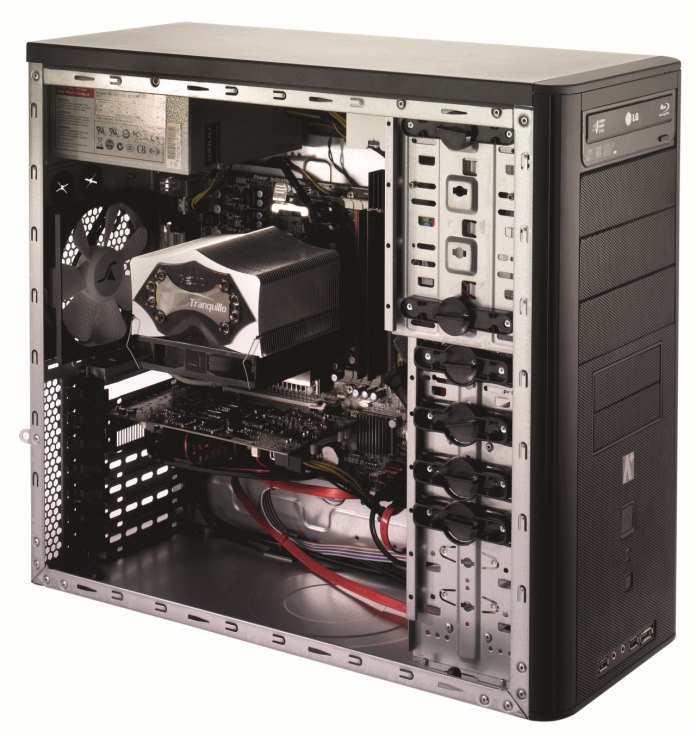
After more investigation, we found that the graphics card fan was now the loudest component, and was responsible for the disappointingly small improvement. Meanwhile, the low idle noise also made the clacks and clunks of our hard disk more noticeable. Replacing the cooler on a graphics card is extremely tricky, and given that we were trying to limit the upgrade costs for this case study, we decided to live with the graphics card and concentrate on the hard disk.
We first tried the rubber grommets that came with the Fractal Design Anti-Vibration Kit we’d already splashed out on. These act like padding between the supplied screws and the metal hard disk caddy. However, as the screws and rubber grommets still press the metal of the disk caddy to the hard disk, we didn’t notice much difference by using the rubber grommets. The next step was to give the Nexus DTW 2300B DiskTwin a whirl. The two bars attach to either side of the hard disk, placing a block of rubber between the hard disk and the mounts of a 5.25in optical drive bay. It was tricky to fit, though, and we still heard the hard disk loud and clear. We’d therefore recommend avoiding both of these hard disk quietening devices.
Case Study 3: Built to be quiet
Idle Noise: 25.2dBA
Maximum Processor Temperature: 66°C
Maximum Graphics Card Temperature: 69°C
Cost: £775
As noise levels aren’t usually a major selling point for a PC, the best way to a really quiet PC is to build it from scratch yourself. The most important part of the build is the case. The Fractal Design R3 costs £90 and is spacious, attractive, versatile and offers various features to keep a fast PC cool and quiet, including noise-absorbing material on most of its outer panels.
Any fan-less motherboard will be fine, but if you choose a really fast processor you’ll struggle to keep it cool quietly. If you do want a fast PC, consider the Cogage Arrow cooler, which is extremely quiet because it’s absolutely massive. This can cause issues when you’re building your PC, though – it might clash with tall memory modules or the heatsinks of your motherboard. It also costs £40, so we’ll stick with the processor we used in the previous case studies and the Gelid Tranquillo cooler.
The other main source of noise is the graphics card, but a passive card uses a heat sink with no fan, and is therefore totally silent. For this PC we used a passively-cooled Gigabyte Radeon HD 5770 Silent Cell (part code GV-R577SL-1GD). This needed a helping hand to keep cool so we added a Scythe Slip Stream 120mm slim case fan (around £10) to the build. This fan was mounted on the case’s side panel to blow directly onto the card. We had to choose a slim fan because we found that a standard-width one pressed slightly against our Gelid Tranquillo cooler.
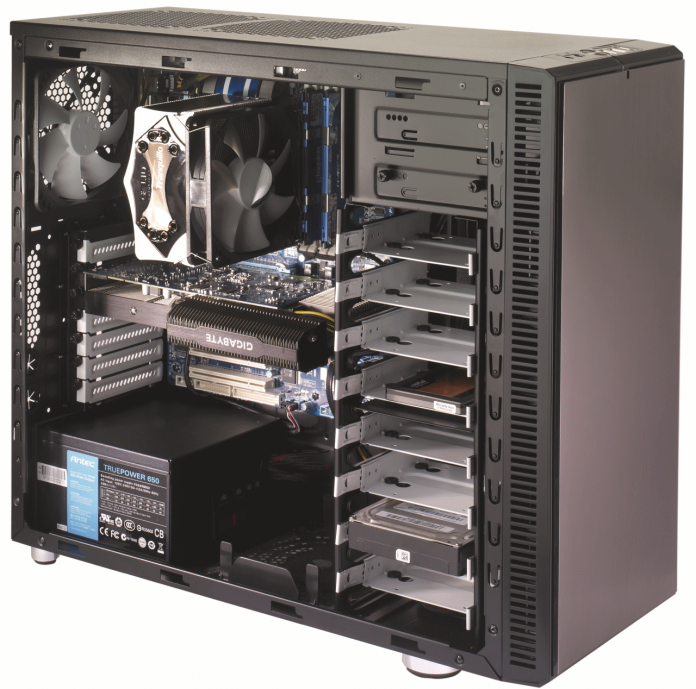
Finally, there’s that hard disk to consider. As we’re really pushing the quietness angle, we used an SSD for Windows and our applications. However, this wouldn’t give us anything like enough storage for our photos and videos, so we needed an additional hard disk of some kind. We could use a NAS box if we were really flush, as this would let us put that clacky hard disk in another room and access it via our home network.
However, we plumped for the more straightforward and cheaper Samsung SpinPoint EcoGreen F3 2TB hard disk, which costs around £90. The Define R3 case has silicone mounts for the hard disk, and the Samsung disk is designed for quieter operation. The sacrifice is less speed, but we’ll only use the disk for low-speed use, such as playing slideshows or videos, so that’s fine. We also really liked the quietness of the LG CH08LS10 Blu-ray drive, even though it’s pricey at £70.
The final piece in the jigsaw is the power supply, as this isn’t included in the Fractal Design case. SeaSonic has a range of fan-less power supplies, but with the highest rated 460W costing a staggering £146, we’ll stick with 650W Antec TruePower New TP-650 for £90. The final PC looked great and was virtually inaudible over the 30dBA typical background noise of a quiet room. It wasn’t cheap at £775 – and that doesn’t include the processor, motherboard and memory – but that’s the price of a quiet life.
SHUSH NOW
Whatever measures you decide to take, we hope this feature will help you add some much-needed tranquillity to your computing activities. Considering the amount of time we spend sat in front of PCs these days – and the noise and stresses of most other parts of modern life – we certainly deserve it.

